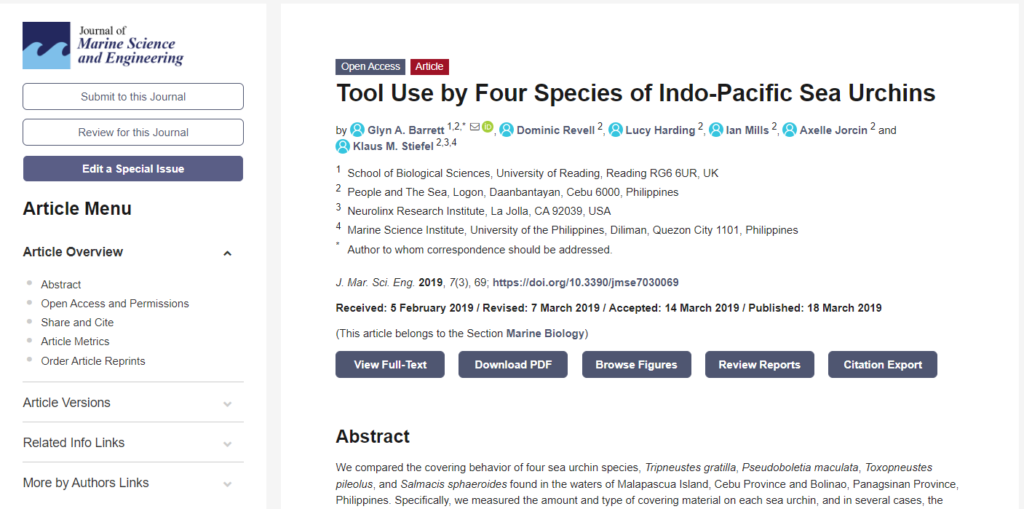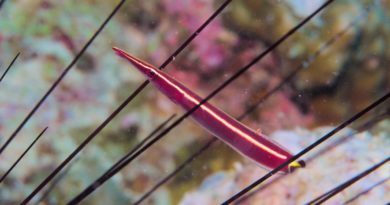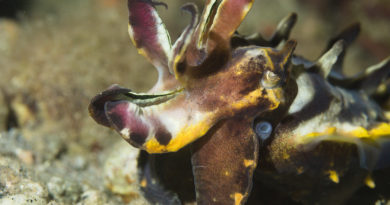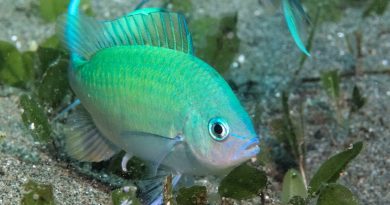Campaign for Echinoderm Intelligence Respect
I stumbled into the field of echinoderms by accident. I had always been a vertebrate-centric zoologist, doing my doctoral work on rat brains, and becoming increasingly interested in fishes. Only when visiting a really nice environmental NGO in the Cebu province of the Philippines (People and the Sea) and talking to their science officer, Dr. Glynn Barrett, did my interest in the group of animals start.
With my colleagues from People and the Sea we later even published a paper in which we argue …
that the tendency of sea urchins to cover themselves with a variety of marine debris, as seen here:

… is akin to tool use, when going with every commonly used definition of “tool use”. Animals without a brain (but with a very sophisticated nerve net all over their bodies) can do what only humans and great apes were thought to be capable of until a few decades ago, use tools. By now, a greater number of vertebrate and invertebrate animals are known tool users, and some of them do it in very elaborate ways, like the crows. But a sea urchin? Yes, it seems so, they use tools too.
The aforementioned absence of a brain has led to a general believe that echinoderms are pretty, interesting, sometimes venomous, definitely highly evolved in many regards such as their trophic ecology, but not particularly intelligent. I believe that that’s wrong. Tool use is only one of the observations which has convinced me that echinoderms interact with their environment in clever ways.
There is More
Look at the following video: a mated pair of sea urchins travels together over the sand, and evades divers without separating. Clearly a non-trivial behavioral task. Look at all the spine movement while they are moving around together:
Communication
And check out this footage: clearly, touching their appendages is a form of communication. The urchins convene, seemingly exchange some form of information, and move apart again. The tube feet and spines are highly innervated, and the tube feet are olfactory, touch and seemingly also visual sense organ. Imagine 100s of hands which can also smell and see, touching from one individual to the other:
Graceful Degradation
Finally: In the field of artificial intelligence/machine learning, scholars are big on the idea that a distributed representation of information, one which spreads the info out over many “nodes” breaks much later when piece by piece of the representation is removed. A small error in the hardware doesn’t destroy the whole system. Echinoderms degrade extremely gracefully. This one is almost bitten in half and still tries to get away from the puffer fish eating it:
Arothron manilensis, Manila puffer, feeding on a sea urchin (ID please @echinoblog ), which is trying to escape, despite being already half-eaten. This shows how sturdy echinoderms are. #fish #echinoderm #predator #prey #AnimalBehavior #Dauin #Philippines pic.twitter.com/1zUR5le1HZ
— Klaus Stiefel (@Pacificklaus) October 16, 2022
I Conclude
Echinoderms are very different in neuroarchitecture from us. But they are tuned to degrade gracefully, and to function under harsh conditions, with less energy used for massive, centralized brains. They are not as smart as a crow or a primate, but they show a surprising amount of intelligence in many situations. Respect the echinoderm intelligence!
PS: If you read German, I wrote about the topic in Spektrum der Wissenschaft a few years ago about a animal tool use in general.


